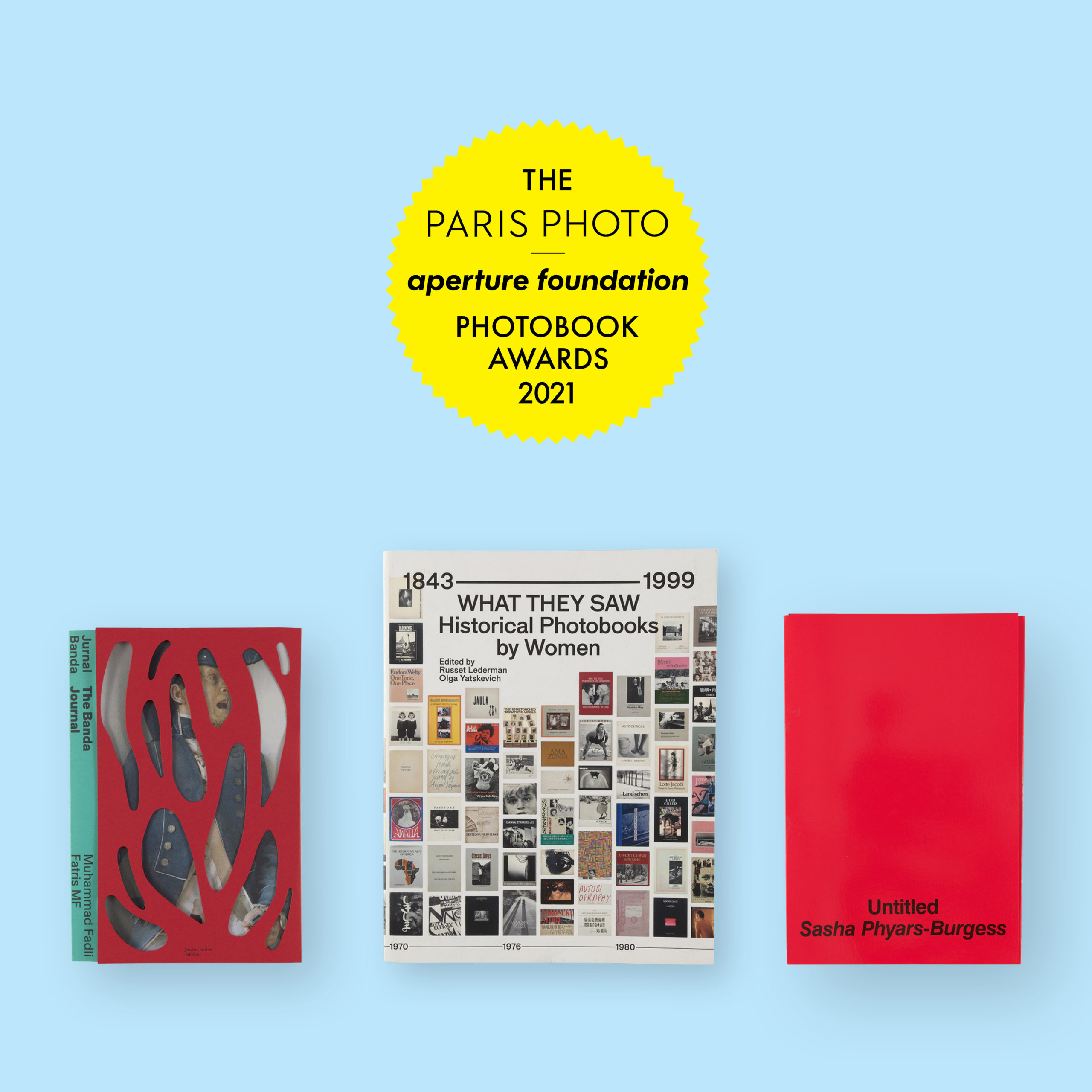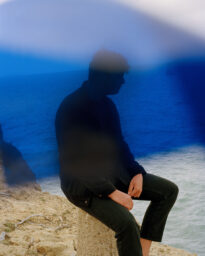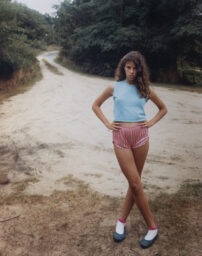A Look Inside the Shortlisted Titles for the 2021 PhotoBook Awards
These 35 photobooks highlight excellence in publishing across a wide range of topics and photographic styles.
Photograph by Daniel Salemi
Initiated in 2012, the Paris Photo–Aperture PhotoBook Awards celebrate the photobook’s contributions to the evolving narrative of photography. Each year, thirty-five selected books are shortlisted in three major categories: First PhotoBook, PhotoBook of the Year, and Photography Catalogue of the Year.
This year’s shortlist jury met in New York, September 20–22, 2021, for three intense days of viewing and deliberating the submitted books. The 836 books, received from forty-nine countries around the world, stand as a testament to the commitment to and continued importance of the photobook as an essential part of the photography community’s output.
The 2021 shortlist selection was made by a jury comprising: Emilie Boone, art historian; Sonel Breslav, director of fairs and editions, Printed Matter; Darius Himes, international head of photographs, Christie’s; Lesley A. Martin, creative director, Aperture; and Jody Quon, director of photography, New York magazine.
The imprint of the pandemic and other difficulties of the past year were also tangible in the notable number of very strong, introspective projects that brought forth material grounded in the studio, as well as drawn from archives and older bodies of work.
Below, read more about the thirty-five selected titles in the 2021 PhotoBook Awards Shortlist. An exhibition of the shortlisted titles is on view at Printed Matter through February 27, 2022.
Photography Catalogue of the Year

Courtesy Estate of André Kertész
André Kertész: Postcards from Paris
Elizabeth Siegel, ed., Art Institute of Chicago, 2021. Designed by Jena Sher.
André Kertész: Postcards from Paris sheds new light on a previously underexamined aspect of this virtuosic photographer’s early practice, his carte postale prints from the 1920s. On Kertész’s arrival in Paris, he produced a series of now iconic images—from views of the city to studio tableaux, from still lifes to a dynamic range of portraits. He shared the results with a growing coterie of international friends and family in Hungary by printing the resulting images on postcard stock. Essays by Sarah Kennel, Sylvie Pénichon, and Elizabeth Siegel give context to the over two hundred illustrations, exploring Kertész’s photographic themes and his bohemian social circle. The book’s design subtly reflects Kertész’s early experimental ethos, with each spread playfully changing the postcard’s position on the page. “The postcards collected together in this book are magnificent little jewels, and the accompanying scholarship sheds wonderful light on his early years in Paris,” states juror Jody Quon. “The layout very elegantly displays these objects at scale in an organized yet lyrical way.”

Courtesy the artist
Bad Ass and Beauty—One Love
Mao Ishikawa, T&M Projects, Tokyo, 2021. Designed by Hikari Machiguchi.
Bad Ass and Beauty—One Love is an impressive, 408-page survey compiling the work of one of Okinawa’s most important photographers, Mao Ishikawa. Published in accompaniment to Ishikawa’s first solo exhibition at a museum, held at the Okinawa Prefectural Museum and Art Museum, March–June 2021, this catalogue contains all fifteen series of Ishikawa’s works to date, as well as various essays by Japanese scholars, a chronology of Ishikawa’s life, and a bibliography. For those primarily familiar with the artist’s work from the 1970s, this title offers a fascinating introduction to her more recent color work. Ishikawa photographs Okinawan bar workers, theater company actors, dancers, dockworkers, and soldiers alike, drawing the viewer into an honest and blissfully present encounter with her subjects. “I was blown away by the rawness and complexity of the photographs,” juror Sonel Breslav states. “This work offers a powerful and compelling female perspective within Japanese photography.”

Courtesy the artist and Pace Gallery
Mirror with a Memory
Dan Leers and Taylor Fisch, eds., Carnegie Museum of Art, Pittsburgh, 2021. Designed by Daniel Cohen and Mỹ Linh Triệu Nguyễn.
This compact and glittering brick of a catalogue is packed with illustrated commentary, curatorial essays, as well as artist interventions such as a series of fold-out, typographic posters by Sang Mun and a set of reflective stickers by Studio LHOOQ. The hyper-contemporary design approach is in keeping with the theme of Mirror with a Memory, an exhibition that explored photography’s relationship to biometric, aerial, and behavioral surveillance, tracing a line from Alphonse Bertillon and Eadweard Muybridge to contemporary artists who have taken these themes as their subject, such as Trevor Paglen, Martine Syms, Oliver Chanarin, and others. “The catalogue serves as a tremendous resource for those interested in the thorny topics inherent to the contemporary social field of the image,” notes juror Lesley Martin, who also observes that the catalogue “extends the exhibition inquiry in critical ways,” including writings and artist work dealing with computational photography, artificial intelligence, the right to privacy, and implicit bias, as well as original translations of historical texts and relevant case law.
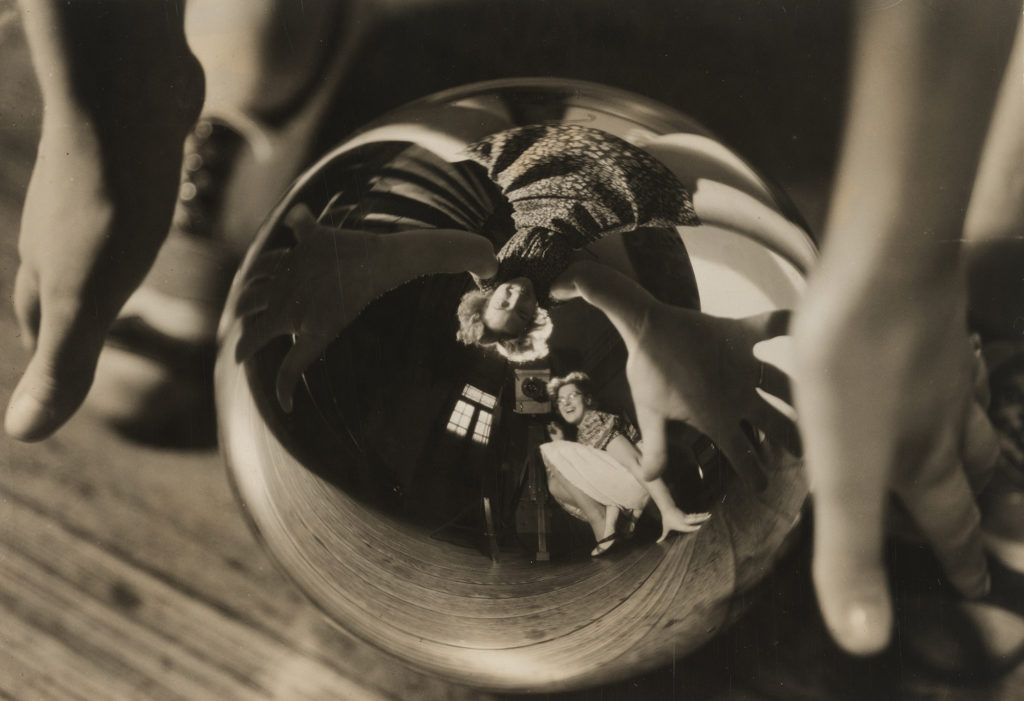
Courtesy National Gallery of Art, Washington, DC, Alfred H. Moses and Fern M. Schad Fund
The New Woman Behind the Camera
Andrea Nelson, ed., National Gallery of Art, Washington, DC, 2020. Designed by Margaret Bauer.
The New Woman Behind the Camera features the work of 120 international women photographers, all working between the 1920s and 1950s—a richly illustrated and in-depth look at the groundbreaking exhibition originated by the National Gallery of Art. The catalogue and exhibition examine the profound impact that women made on the medium of photography during this era—from studio portraiture to fashion imagery to photojournalism. The New Woman includes well-known artists, as well as those whose work has been less celebrated, from Berenice Abbott, Dorothea Lange, and Lola Álvarez Bravo to Germaine Krull, Tsuneko Sasamoto, and Homai Vyarawalla. Beautifully printed and thoughtfully organized, the book is broken into thematic chapters with texts by curators and art historians that touch on a range of topics—from women working in the commercial space to women reporting from abroad. This catalogue “goes far in adjusting our understanding of the depth and breadth of the contributions of women to photography during this time,” notes juror Darius Himes. “It will be an important addition to anyone’s shelf.”

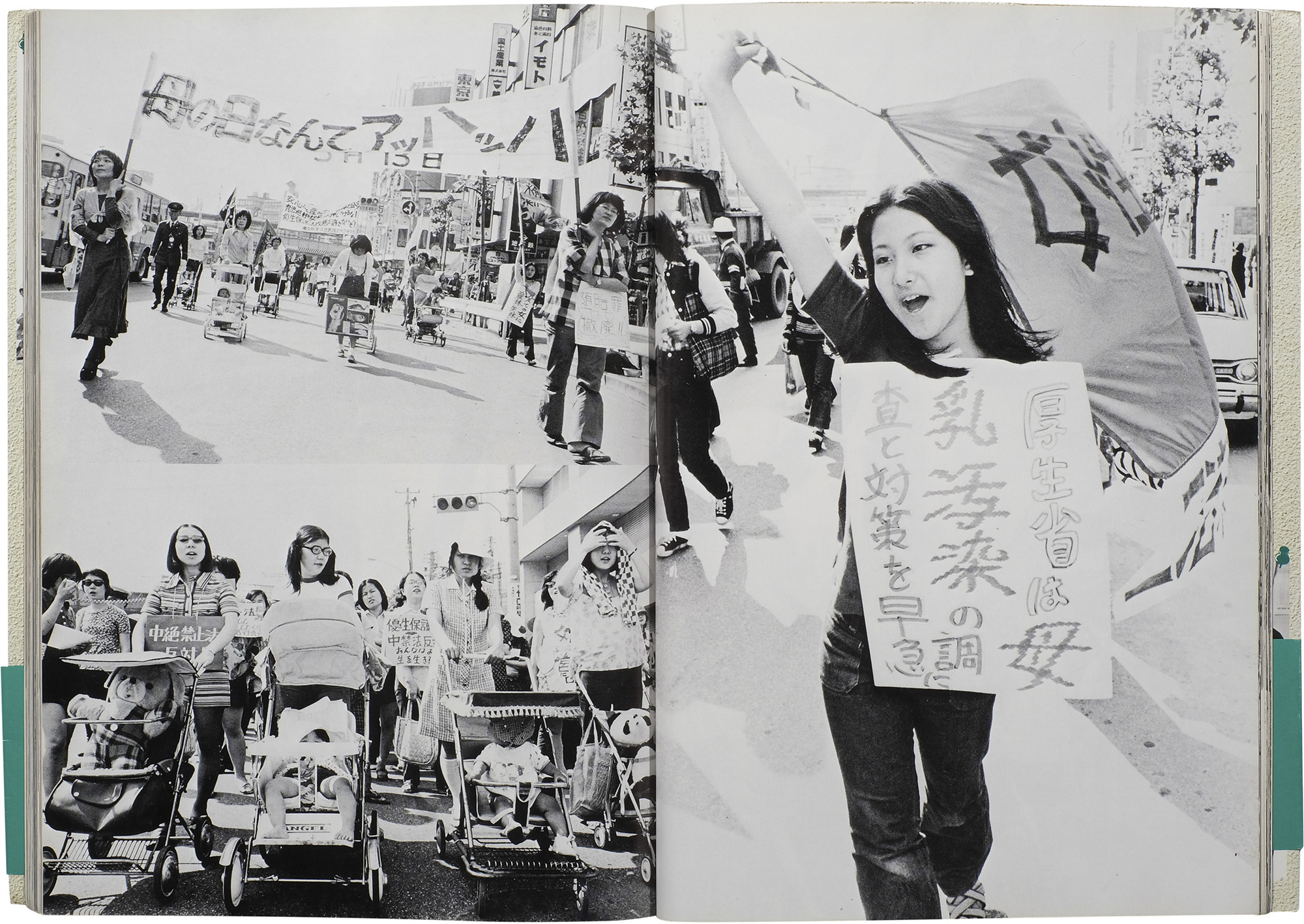
What They Saw: Historical Photobooks by Women, 1843–1999
Russet Lederman and Olga Yatskevich, eds., 10×10 Photobooks, New York, 2021. Designed by Ayumi Higuchi.
What They Saw: Historical Photobooks by Women, 1843–1999 features a selection of 250 photobooks, including traditional publications, from landmark titles to largely unknown works, as well as items not generally considered “books”—portfolios, personal albums, scrapbooks, and zines. “Not only does it expand the scholarship and access to the work of female artists,” says juror Emilie Boone, it is “an important contribution to the history of photography, zeroing in on the topic of photobooks and how the form is broadly defined.” This volume provides a purposeful challenge to what constitutes a photobook, and considers how the definition of the medium may have hampered the inclusion of existing histories. What They Saw is diverse both in its selection of works and in the voices of the scholars that contribute its informative research and accompanying texts. From its opening pages, What They Saw “sets the tone for shifting history in a manner that is new, exciting, and boundary defying,” according to Boone.
PhotoBook of the Year

Courtesy the artist
Hello Future by Farah Al Qasimi
Capricious, New York, 2021. Designed by Studio Lin.
As aesthetically sharp as it is comprehensive, Hello Future brings together several bodies of work from Farah Al Qasimi’s photographic, performance, and film practice. The book is playfully presented with a mirror-chromed, paper-over-board binding wrapped in a sticker-paper dust jacket. The sequence of images move dreamlike through the fantastical and quotidian—from a trio of pastel chicks on a tiled floor, to the hint of a floral figure from behind a drape, to a hooded falcon bathed in a scene of blue. Within her distinctively textured and opulent landscapes, Al Qasimi disrupts and intervenes with our structural understanding of postcolonial gender, power, and aesthetics in the Persian Gulf states, often through moments of obscurity and camouflage. In her wielding of the nonsensical, Al Qasimi examines national identity in the wake of hyper-globalization with both tenderness and humor. “This was unanimously loved by the jury. With each turn of the page, there is so much to absorb and encounter, leaving you wanting more,” Sonel Breslav states. “Lucky for us, there are three hundred pages of this book.”

Courtesy the artist and VG Bild-Kunst, Bonn
Cut Outs by Jessica Backhaus
Kehrer Verlag, Heidelberg, Germany, 2021. Designed by Hannah Feldmeier and Jessica Backhaus.
Cut Outs offers a lyrical meditation on color, light, and form—at once mysterious and precise. With a minimalist touch, Jessica Backhaus arranges and photographs physical cutouts of transparent paper that “curl and rise, casting shadows, and performing a beautiful dance of color and abstraction,” Breslav comments. Beautifully printed with vibrant inks on matte paper, each abstraction is elegantly presented as a single plate against a rich black-printed facing page, allowing the viewer to absorb the nuances of each sculptural experiment. The book block itself, with its colorfully sprayed edges, plays with the idea of sculpture and ink. “This book stood out for its incredible attention to form and intentionality, with stunning colors and material selection,” Breslav praises. Cut Outs breathes new life and possibilities into Backhaus’s visual vocabulary, a sharp turn toward the internal and experimental for this otherwise observational photographer.

Courtesy the artist
Suburban Bus by Alejandro Cartagena
The Velvet Cell, Berlin, 2021. Designed by Ricardo Nunes.
Over the past fifteen years, Monterrey, Mexico–based photographer Alejandro Cartagena has embarked on a multipronged effort to document the growth of and transition within Mexican border towns and suburbs. “Cartagena is an inveterate archivist and bookmaker,” Lesley Martin notes, “and each of his books, like this one, vibrantly fills in yet another quadrant in the visual map of his evolving social landscape.” Suburban Bus reenacts Cartagena’s former bus commute between Juárez and Monterrey, gathering his photographs of blue-collar suburbanites as they grapple daily with the chronically under-resourced public transportation on which they rely. The book is stuffed with colorful images and vivid impressions—telling details of his fellow commuters as seen from over their shoulders, and glimpses of the landscape as caught through the crammed bus interiors and windows. “It’s deceptively simple,” commends Martin, “but in its expert use of sequence and the pared-down beauty of astutely observed details, genuinely transporting.”

Courtesy the artist and Magnum Photos
Agata by Bieke Depoorter
Des Palais (self-published), Ghent, Belgium, 2021. Designed by Ramon Pez and Bieke Depoorter.
Bieke Depoorter’s self-published volume Agata is an exploration of the possibilities and limits of artistic collaboration—asking what it means to be a subject, an unbiased documenter, a friend, and an artist. Over the course of three years, Depoorter collaborated closely with Agata, whom the photographer met in 2017 at a strip club in Paris. Together, they created a series of photographs that highlights the slippery nature of truth and artistic ethics in a situation where power and control are in a constant state of flux. “What started as a professional project became a friendship, and the lines of the two continued to blur,” states Jody Quon. “This book makes you question how the photographer’s presence impacts the subject.” On first read through, the book offers a chronological sequence broken into chapters marked by time and location. But this narrative, like the evolving relationship between Depoorter and Agata, grows in complexity. When the viewer encounters the Japanese binding with perforated edges, they have the option to tear the pages open, and to access an alternative perspective.

Courtesy the artists
Electronic Landscapes: Music, Space and Resistance in Detroit by Isaac Diggs and Edward Hillel
+KGP, Queens, 2021. Designed by Wax Studios.
Artists Isaac Diggs and Edward Hillel celebrate Detroit’s techno, house, and hip-hop scenes with this thoughtfully designed book, which in its fluid pacing and layout, evokes the movement, sound, and vibrancy of the creative community. An oversized, floppy paperback, Electronic Landscapes presents the unique spaces of local musicians and deejays—lofts, soundproof basements, converted workspaces, and makeshift home studios—the behind-the-scenes of the public performance spaces ordinarily depicted. The lively typographic treatment of the cover and interior texts references the graphic rendering of sound waves as a nod to the craft. In the first portion of the book, images of the city wrap around pages and shift in scale and placement, a pulsing visual beat. Emilie Boone describes the work as a “compelling insight into the urban environment and cultural dynamism of Detroit, a city in the midst of revitalization and transition.”

Courtesy the artist
The Banda Journal by Muhammad Fadli and Fatris MF
Jordan, jordan Édition, Jakarta, Indonesia, 2021. Designed by Laras Koesoemo and Jordan Marzuki.
In The Banda Journal, photographer Muhammad Fadli and writer and self-proclaimed folklore enthusiast Fatris MF join forces to present the little-known story of the Indonesian Banda Islands, a tiny archipelago that has served an outsize role in global trade and the modern economy. Historically, the Bandas were colloquially known as part of the Spice Islands, an area that became an epicenter of colonialism because of the presence of then rare aromatic spices such as nutmeg. “Fadli and MF dig deep into their topic—and in their expert telling, the history of this remote set of islands resonates with fascinating layers of serious economic and sociopolitical import,” observes Martin. “The Banda Journal uses a thoughtful balance of compelling images and generous texts, in Indonesian and English, to peel back the layers of history,” she concludes. Chapter by chapter, their incisive and engaging storytelling connects a seemingly distant and brutal past with its contemporary consequences on the islands today.

Courtesy the artist and Loose Joints
I Can’t Stand to See You Cry by Rahim Fortune
Loose Joints, Marseille, France, 2021. Designed by Sarah Piegay Espenon.
Rahim Fortune’s latest book, I Can’t Stand to See You Cry, is an ode to Texas, its people, and the complexity of the times. In the spring of 2020, Fortune returned to his childhood home to help care for his father, who was battling a progressive disease of the nervous system. In the midst of becoming a caretaker, Fortune began making photographs of family, friends, and strangers. Caught in the middle of a global pandemic and a summer of civil unrest, Fortune’s photographs are touched by pain and sadness but carry a surprising sense of hope. “Everything about this book glows, and is beautiful,” notes Darius Himes, “the light on skin, the embrace of friends, the ink on paper, the deep corn-yellow endpapers.” The book is beautifully printed and contains no text. “The absence of any written words reinforces the primacy of the photographs, which become their own deeply moving image-poem,” Himes concludes.

Courtesy the artist
Encampment, Wyoming by Lora Webb Nichols
Fw:Books, Amsterdam, 2021. Designed by Hans Gremmen.
Encampment, Wyoming is the first volume to feature this historical collection of black-and-white photographs assembled by Lora Webb Nichols. Nichols used her entrepreneurial prowess to support herself through her own photographic work, making images and collecting additional photos by other photographers to create a resonant chronicle of her community. Starting at the age of sixteen and continuing over her lifetime, Nichols amassed a remarkable archive. She created and collected approximately twenty-four thousand negatives during the early twentieth century in Encampment, Wyoming, a copper-mining boomtown. “The photographs have such stillness, intimacy, and beauty, as well as a bit of humor—a full spectrum of images and life,” states Boone. Additionally, the Nichols archive includes the photographer’s original diaries, which are excerpted in the book’s tender afterword and biographical essay. Nichols devotedly recorded her experiences from the ages of thirteen to seventy-nine and revealed how photography was an almost daily practice for her, as is evident in the rigor, depth—and timelessness—of the images in this book.

Courtesy the artist
Whatever You Say, Say Nothing by Gilles Peress
Steidl, Göttingen, Germany, 2021. Designed by Gilles Peress and Karina Eckmeier.
In the 1970s and 1980s, Gilles Peress photographed the strife in Northern Ireland, intent on testing the limits of visual language and perception in the face of intractable conflict. Thirty years later, Peress has published this work in the much-anticipated, multi-volume edition Whatever You Say, Say Nothing. The book is available as an affordable, stand-alone paperback edition, including a comprehensive timeline and historical context that engages with the idea of “documentary fiction.” A more elaborate limited edition is available in its own bespoke tote bag. In addition to a clamshell-boxed copy of the paperback, this edition includes two oversized volumes collectively presenting over a thousand of Peress’s arresting photographs, dynamically sequenced, with each spread including anywhere from one to eight photographs. Together, these three volumes offer an overwhelming depiction of the nature of civil war, and hint at the complications and absurdities of the effort to describe conflict. As Quon enthuses, “This is how history should be taught—with a combination of powerful photography, detailed research, and design that helps the reader to seamlessly navigate all the elements.”

Courtesy the artist and Chose Commune
Amma by Vasantha Yogananthan
Chose Commune, Marseille, France, 2021. Designed by Kummer & Herrman.
Inspired by the epic Hindu tale of the Ramayana, Vasantha Yogananthan retraced this legendary journey from Nepal to India to Sri Lanka to create his long-term series A Myth of Two Souls. Amma is the seventh and final chapter of the series, concluding Yogananthan’s eight-year photographic journey. Each image in the book, which consists of sixty photographs, is individually tipped-in by hand. “Every choice made for the production of this book speaks to elegance and a kind of spiritual elevation,” states Himes. “With the textured dust jacket over a creamy book block and the beautiful printing, the sum of the parts here works toward the goal of conveying an otherworldly story and journey.” Using a range of techniques, including photography, mixed media, and hand-painted photographs, Yogananthan intervenes and reinterprets the Ramayana, in the end creating his own modern retelling of this ancient classic. “Sustaining something like this over time takes discipline and vision, both of which are in abundance here,” concludes Himes.
First PhotoBook
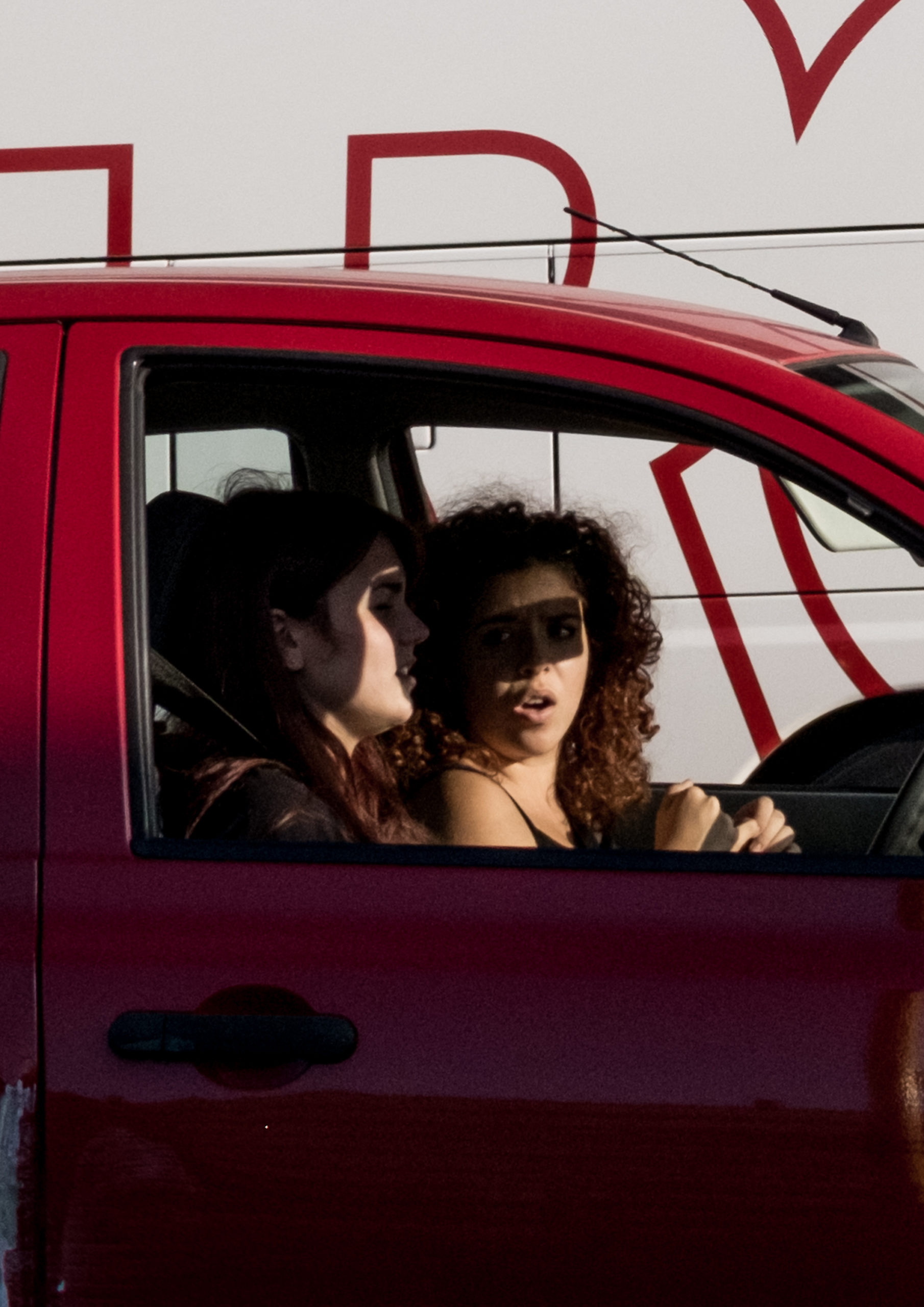
Courtesy the arist
Piccola Russia by Andrea Alessandrini
Witty Books, Turin, Italy, 2021. Designed by Antonio Xoubanova.
Piccola Russia by Andrea Alessandrini is an intimate look at the neighborhood of Valle Aurelia in Rome. Once rumored to have been lauded by Lenin as a model for working-class communal life, today the area is overshadowed by high-rise buildings and a new shopping center. Alessandrini captures the details and quieter moments of the area—the geometric shape of a staircase, a singular playing card on the ground, two people conversing in a car. The book is shaped to be readerly. “The small format of this powerful little book reminds me of Penguin’s classic literature series,” notes Darius Himes. “The mix of text and images enhances the sense of a narrative unfolding.” The book is printed on a toothy uncoated paper, with red-dyed edges. A single line of text flows throughout the book at the bottom of the pages—emphasizing select words in larger font size than others—drawing the viewer in and making each turn of the page an exciting discovery.

Courtesy the artist
Why can’t bras have buttons? by Indu Antony
Mazhi Books (self-published), Bangalore, India, 2021. Designed by Indu Antony.
Why can’t bras have buttons? is artist Indu Antony’s memory box—a delicate and tactile assemblage born from heightened feelings of isolation and the absence of touch during the pandemic in 2020. In this introspective set of handmade cards enclosed in a foil-stamped paper box, Antony gathers a series of photographs, each featuring a singular personal object on an unbound page—a bird feather, a beer-bottle cap, a Chilanka bell, thirteen emerald beads. A simple anecdote on the reverse of each card recalls an intimate, personal, fragmentary memo. For a shriveled Kanthari chili, Antony notes in scrawling ink, “She always said I was too spicy to be kept.” Through the lyrical and tactile, from the confessional to the suppressed to the tender, Antony invites us to glimpse her. “The objects bear the mark and weathering of each memory,” Sonel Breslav affirms. Each object has been stitched to a sheet of paper with a single strand of the artist’s hair, and then photographed. The resulting optical illusion on each printed card suggests, per Breslav, “as if her body is still holding each object.”

Archivo de la Memoria Trans Argentina
Archivo de la Memoria Trans Argentina and Verónica Fieiras, eds., CHACO Books, Buenos Aires, 2020. Designed by Ezequiel Bluvstein and Verónica Fieiras.
Archivo de la Memoria Trans Argentina (Archive of Argentinian Trans Memory) is an intimate commemoration of, and reunion with, lost loved ones as well as those still standing today. The project, first conceived by trans activists Claudia Pía Baudracco and María Belén Correa, “lovingly reclaims and remembers individuals from a community long marked by repression and violence,” Breslav states. This small-scale book is Swiss-bound with an exposed spine protected by a pink softcover jacket, and features the title in gold glitter. The archive assembles the compañeras in a wonderful range of posed portraiture, images from nightclub and Carnival performances, and traditional “family-style” snapshots, all gathered alongside remembered stories of times and people past. In this moving book-as-archive, the Argentine trans community exists in eternal and tireless resistance. “We are lucky that these individuals have documented each other in this brave way, such that the materials are now available to engage with and the community can be remembered for their contributions,” Breslav concludes.

Courtesy the artist
Carretera Nacional by Melba Arellano
Los Sumergidos, Hudson, New York, 2021. Designed by Fernando Gallegos and Alejandro Cartagena.
Growing up, photographer Melba Arellano would drive with her family down the Acapulco-Zihuatanejo National Highway along the west coast of Mexico and take notice of the villages scattered along the stretch of road. Years later, Arellano returned to these villages, previously off-limits to her, and began making portraits of the people and spaces they contain. In Carretera Nacional, Arellano’s goal isn’t a literal reinterpretation of her childhood road trips; instead, she pursues her own narrative of these lives and spaces that once fascinated her as a child. The photographs in this softcover, saddle-stitched book are printed full bleed and without contextualizing title information, maximizing the immersive, hypnotic quality of the images. Himes states, “This refreshing revisiting of the scene of repeated childhood trips showcases Arellano’s authentic blend of intense portraits, roadside fruit stands, and landscapes in a humble yet compelling package.”
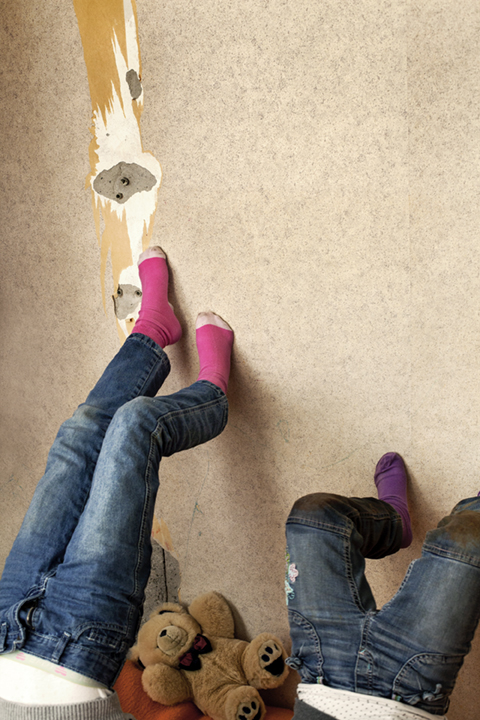
Courtesy the artist

Family Stranger by Wiosna van Bon
Eriskay Connection, Breda, the Netherlands, 2020. Designed by Rob van Hoesel.
Family Stranger by Wiosna van Bon is a striking visualization of the complex lives of individuals with incarcerated family members. The book is filled with portraits in which faces are obscured, interspersed between quiet moments of family spaces and daily objects. Nestled between the pages are gatefolds that contain heartbreaking statements made by Bon’s subjects—regrets and frustrations that are difficult to speak aloud. Although the faces of these individuals are never revealed, via their writing, their stories and voices carry the viewer through the book. “I was engrossed in the hidden pages of text, which required my active engagement to access,” states Himes, “I couldn’t stop reading and thinking about the social taboo of talking about incarcerated loved ones and the impact that has.” The book, with Japanese-style binding, transitions from images of family to recognizable prison imagery, a shift also signified by the design of the book and paper choices. “This is one of the most thoughtful and gentle approaches to the problem of social stigma I have encountered in years,” concludes Himes.

Courtesy the artist and Chose Commune
Leaving and Waving by Deanna Dikeman
Chose Commune, Marseille, France, 2021. Designed by Bureau Kayser.
According to Jody Quon, Leaving and Waving by Deanna Dikeman is a “wonderful record of life, love, and sorrow.” Taken over the course of twenty-seven years, Dikeman photographed the simple act of her parents waving goodbye as she left their home after each visit. In many ways, the book acts as a family album—documenting life moments, seasonal changes, the birth of Dikeman’s son. When the shift from black-and-white to color photographs occurs, there’s a sense of sorrow with the discovery that Dikeman’s father no longer appears in the frame. There are no captions in the book, only dates in the bottom corner that indicate the years passing. “Waving goodbye to your loved ones is a universal act, and relatable to all,” notes Quon. “When I flip through these pages, I see Deanna’s parents lovingly saying goodbye, and am simultaneously seeing my own parents in my mind.”

Courtesy the artist
EverWonderful by Jeano Edwards
Self-published, Brooklyn, 2021. Designed by Jeano Edwards.
Jeano Edwards’s EverWonderful, an immersive dip into the landscape and communities of the Brooklyn-based photographer’s native Jamaica, exudes a laid-back jubilance. The book is edited and designed by Edwards and abounds with full bleed–double-page spreads—often featuring tight close-ups of friends—interspersed with pages of smaller images paired against single-page bleeds, skillfully directing the viewer’s eye toward particular details and patterns of people and places. The loose and informal feel of the flexible binding and the toothy paper used inside work together to evoke a relaxed but intimate experience of Jamaica. “Edwards has worked in fashion, including shooting short films for Grace Wales Bonner,” Lesley Martin notes. “And while an attention to style and hip youth culture informs the look and feel of the publication, it’s the careful consideration of sequence and image pairs that makes this a stand-out offering.”

Courtesy the artist
Weathering Time by Nancy Floyd
GOST Books, London, 2021. Designed by GOST.
With over twelve hundred photographs taken across decades, Weathering Time presents one woman’s daily practice of taking her own picture. Nancy Floyd uniformly composes each black-and-white image in the same vertical format, framing her full-length self-portrait, alone or sometimes with loved ones. As Quon states, “The rigor of documenting yourself for thirty-eight years is astonishing. This book is an extraordinary anthropological look at womanhood, so beautiful in its quotidian and magnificent banality.” The book is edited into idiosyncratic typologies of common themes in regular life—Mom, Dad, wedding day, pajamas, shorts, backpack, good hair, interesting hair, pets, birthdays, moving, remodeling, computers, darkrooms/art studios, telephones, and automobiles—visually ascribing changes in fashion, technology, and aging bodies. Quon says, “The grid format allows us to scan the minute details of similarities and differences and offers so much pleasure!”

Courtesy the artist
You Can Call Me Nana by Will Harris
Overlapse, London, 2021. Designed by Tiffany Jones.
Will Harris combines photos from his family archives with manipulated images, collage work, new photographs, and handwritten texts to present a poignant memoir of his grandmother, Evelyn. Emilie Boone states, “You Can Call Me Nana pulls you into Evelyn’s world through her repeated image. It shows the arc of her life, love, joy, and eventual loss as the result of dementia in her later years.” Reminiscent of a small photo album, the book features a range of photographic formats that convey the passage of time—from formal black-and-white portraits to color snapshots with rounded edges. Additionally, inserts, such as a loose Polaroid, are woven into the narrative in compelling, unexpected ways. The images serve to represent this Black family, but also reveal its engagement with the medium over time, through photographs marked by folds or creased edges, perhaps passed back and forth between family members. “Conversations come to life between the pages of this beautiful book,” says Boone.

Courtesy the artist
Mastering the Elements by Jana Hartmann
Eriskay Connection, Breda, the Netherlands, 2021. Designed by Nicolas Polli.
Jana Hartmann interweaves questions of the philosophical, historical, and ethical in this expansive and exploratory book on the scientific conquest of nature, from the days of alchemy to the present. Enclosed within a luxurious satin cover, Mastering the Elements establishes a rhythmic and interdisciplinary dialogue between abstract motifs, tipped-in booklets of alchemical texts, diagrams, modern scientific writings, and Hartmann’s immersive images of cosmic material, natural-history exhibits, and scientific phenomena. “This book has the initial feel of a textbook or encyclopedia, that then takes a deep dive into a gorgeous and strange sequence of images,” Breslav describes. “Each page feels like it opens a door to further curiosity.” Like the allure the mythical “philosopher’s stone” had for ancient alchemists, Hartmann captures the reader’s own curiosity, and queries the nature of our scientific world, with profound implications for society—a necessary ingredient toward a broader social discourse.

Courtesy the artist
Office Hours by Joe Johnson
There There Now, Columbia, Missouri, 2020. Designed by Travis Shaffer.
The life of a photography professor has become particularly embattled during the past few years of remote learning and student protest. Joe Johnson’s Office Hours provides a visual primer on how to productively pass the time during the eponymous slots during which students come to their teachers with questions and complaints. The images, Risograph-printed in black, white, and blue ink, offer details of art-school life—office desks stacked with books, blackboard diagrams explaining the relationship between image and text. The texts in this book are excerpted anonymously from Johnson’s communications, described as both official and unofficial, from student to teacher. They include such bon mots as, “Maybe some lectures about composing photos, ‘theory stuff’”; “It’s your privilege, not your right, to educate me”; and “I almost gave up, didn’t.” “The book is very simple in form, but it works on all levels: visually, haptically, conceptually,” Martin states. “I also appreciate that this is a photobook about the dynamics of art school, featuring the work of a photo professor, produced by a newly created, ambitious university-based publishing imprint.”
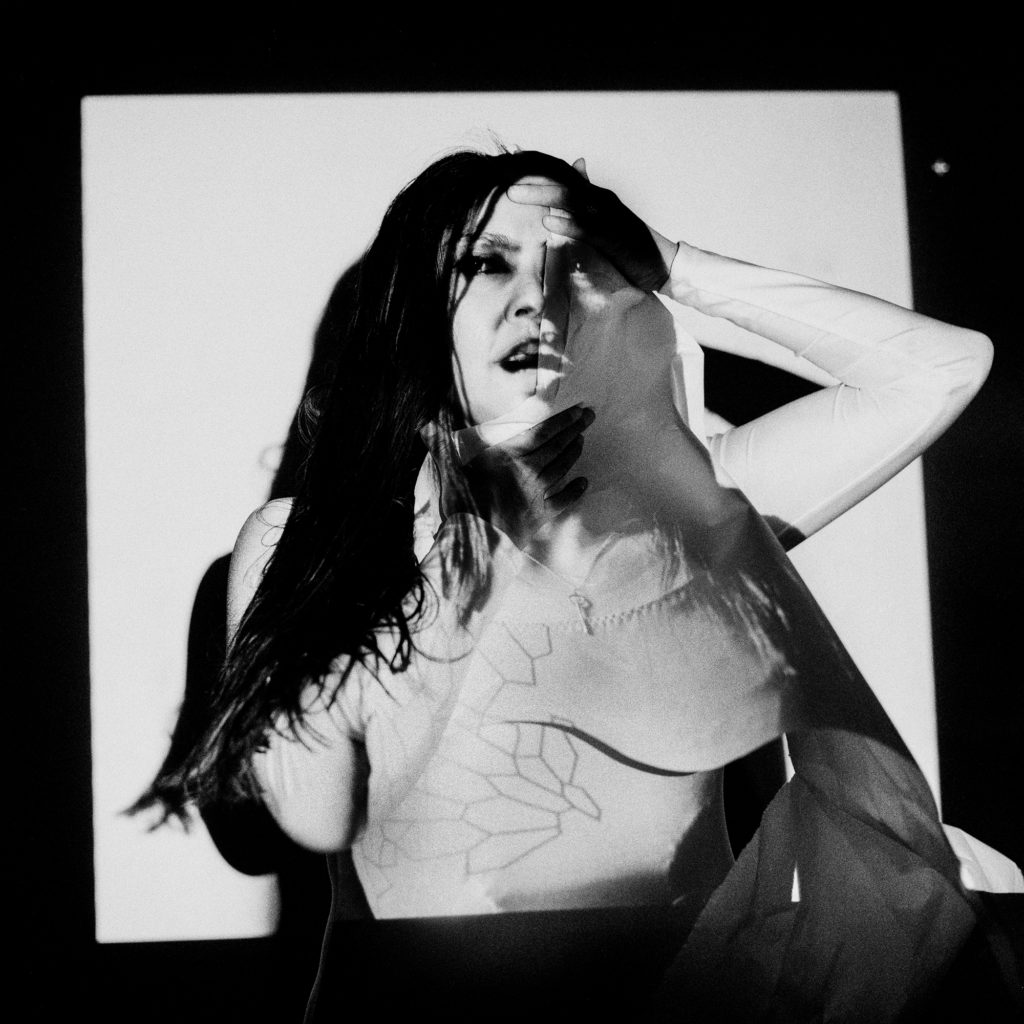
Courtesy the artist
El jardín de senderos que se bifurcan by Tarrah Krajnak
Dais Books, Casper, Wyoming, 2021. Designed by Shawn Bush.
Moving between found vernacular photos, original photography, and personal writing, Tarrah Krajnak traces her familial origins as a transracial adoptee from Lima, Peru. El jardín de senderos que se bifurcan (The Garden of Forking Paths), which takes the same title as a short story by Jorge Luis Borges, does not seek to arrive at a singular authentic truth, but is instead preoccupied by many possible narratives of origin and lineage. The oral histories of Krajnak’s subjects, including her “time twins” (women born in the same year, 1979, in Lima), consider the constructs of belonging, orphanhood, and origin as they appear on the body and in the archive. Quon comments, “This book feels like it is solving a mystery. It is about searching for something, and the process of that journey.” Thoughtfully arranged, modestly but beautifully produced, this book utilizes multiple artistic strategies to reclaim, speculate, and imagine a lost history in all its infinite possibilities.

Courtesy the artist
What are you looking for? by Luke Le
Perimeter Editions, Melbourne, Australia, 2021. Designed by Sasha Taylor.
Luke Le’s What are you looking for? is a modestly sized paperback book with a lightweight, French-fold jacket featuring a detail of a berry bush printed in acid green. The only texts in the entire book are the title, which appears on the spine, and the colophon, which is printed on the back. “The tactility of this book is very satisfying,” notes Martin. “And opening it, you are treated to the pure punch of an uninterrupted sequence of images.” A barrage of black-and-white photographs is printed at maximum contrast on uncoated paper. Each focuses on a figurative yet abstract detail of the landscape—a close-up of gravel, an angry-looking cloud, ivy reaching through a chain-link fence. The result is impressionistic and strangely mesmerizing. “If some photobooks are novels, or historical fiction, others function as collections of poems, haikus. This is a work of poetry,” Martin concludes.

Courtesy the artist
The Yoshida Dormitory Students’ History by Kanta Nomura
Reminders Photography Stronghold, Tokyo, 2020. Designed by Kanta Nomura.
An elaborate hand-produced artist’s book, The Yoshida Dormitory Students’ History is a thoroughly conceived volume, offering readers a heightened tactile experience of a historical narrative. It implements paper changes between textured, uncoated and thin, smooth stocks; a variety of binding techniques including Japanese binding; and a thread-bound, raw board cover that resembles a family album. Bilingual in Japanese and English, this book preserves the history and cultural significance of the self-governing Yoshida Dormitory, the oldest student dormitory in Japan. As of April 2019, the residents face—and are challenging—a lawsuit from Kyoto University that could force them to leave the dormitory. “This complicated history encourages us to rethink what meaning a dorm provides beyond an institutionalized place,” states Boone. “It can serve as a site of resistance for youth during the early stages of their identity formation.” Kanta Nomura developed the photobook under the guidance of Yumi Goto’s esteemed Reminders Photography Stronghold mentorship program. It was produced in spring of 2020, amid the initial outbreak of COVID-19, but was published and made available only this year.

Courtesy the artist and Capricious Publishing
Untitled by Sasha Phyars-Burgess
Capricious, New York, 2021. Designed by Studio Lin.
Untitled by Sasha Phyars-Burgess is a beautifully crafted exploration in three series that span across various sites and spaces—from striking black-and-white photographs of daily life in Trinidad, to images of dance-hall crowds, to portraits of individuals taken in the US, Canada, and England. As a first-generation American born to Trinidadian parents, Phyars-Burgess explores her heritage and its complicated history through photography. Her photographs progress by turns gentle and meditative, expressive and vibrant. The book moves skillfully between the three series with shifts in design and paper choices that are responsive to each body of work. “The photographer’s voice, as expressed in her black-and-white photographs, but likewise in the extended interview included in the book—is incredibly strong,” Himes explains. “She offers her reflections, takes a position, states an opinion, and doesn’t pull any punches.” The paperback book has exposed binding with red thread coordinated to match the red folded slipcase that covers the book.

Courtesy the artist and Loose Joints
I Wish I Never Saw the Sunshine by Pacifico Silano
Loose Joints, Marseille, France, 2021. Designed by Loose Joints Studio.
Pacifico Silano’s I Wish I Never Saw the Sunshine is a poetic exploration that indirectly takes on the HIV/AIDS crisis and its reverberations in queer life. Layering and cropping together gay erotic magazines from the 1970s, Silano creates lushly colored collages that touch on themes from loss, lust, and longing to queer identity and melancholia. Every so often, Silano weaves in fragments of the ocean, sky, or a setting sun, creating an overall dreamlike nostalgia that’s further supported by the volume’s design and uninterrupted sequence. The book’s ambitious accordion-folded production lends itself to multiple readings and interpretations, from as one continuous collage to as a sequence of individual images. “This book is more akin to a sculpture,” notes Quon. “The accordion format allows the book to be displayed on its own.”

Courtesy the artist
A Close Up of a Large Rock, I Think by Sebastian Stadler
Kodoji Press, Baden, Switzerland, 2021. Designed by Winfried Heiniger and Martin Andereggen.
A Close Up of a Large Rock, I Think combines abstract images printed on ultra-glossy and uncoated papers with short, quasi-descriptive texts, both generated by image-recognition software. This slim, neo-Cartesian publication hybridizes everyday images with a thin digital skin. Sebastian Stadler’s multilayered compositions carry a certain ambiguous but strangely compelling graphic presence. The image-recognition software used in creating both the text and images utilizes an algorithm that first queries, “I think,” and subsequently cross-references an expansive text database to source a quote for correlating images. “This book positions our understanding of how the process by which we place meaning on images is in flux—evolving with the development and influence of image technologies and algorithms,” Breslav states. “Here, the imagery is experimental but intentional with its elegant approach to the layering of imagery and meaning.”

Courtesy the artist
Remnants of an Exodus by Al J Thompson
Gnomic Book, Portland, Oregon, 2021. Designed by Jason Koxvold.
Remnants of an Exodus presents a portrait of Spring Valley, a Caribbean immigrant community and suburb of New York City. Al J Thompson settled there when his family moved from Jamaica to New York in the 1990s. For the past ten years, Thompson has returned to his hometown to photograph and try to better understand the double bind of gentrification and disintegration at work in the community. “There’s a moment in the sequence when the tone shifts from wistful to foreboding, signaled by a red vellum insert, behind which lurks an image of a snake,” notes Martin. The tall, narrow trim size of this book is utilized to its full advantage in the way the images sit on each spread; the formal but fluid placement of images on the page successfully draws attention to the internal coherence of each photograph. “It’s a very poetic, elegiac picture of a place,” states Martin, “beautifully seen and elegantly designed.”

Courtesy the artist
Play by Eva Veldhoen
Self-published, Utrecht, the Netherlands, 2021. Designed by Marjolein Heije.
A tower? A rocket? A skyscraper? Taking inspiration from her five-year-old son, Eva Veldhoen turns her camera lens on her child’s toys to contemplate what play means for people of all ages. Her photobook Play is a collection of lively still-life Lego constructions treated formally with white borders, but interspersed with full-bleed image details and brightly colored pages. Additionally, the book form lends itself to a sense of motion; when flicking through the pages, some constructions appear to turn or operate. “This delightful book contains a heightened awareness of form and lines, a boldness of saturated colors that are beautiful like candy, along with a surprising elegance,” regards Boone. Presented in large, fun type treatments, contributions of poems and creative writing also appear throughout the pages, complementing the energy, curiosity, and experimentation that this book celebrates.

Courtesy the artist
Reaching for Dawn by Elliott Verdier
Dunes, Paris, 2021. Designed by Marion Denoual.
Reaching for Dawn is a sensitive reflection on the civil war that decimated Liberia. Elliott Verdier uses photography as a meditation on light, both aesthetically and metaphorically. “I was first drawn to the all-black cover and its silver silkscreen illustration, not a usual choice for a photobook,” says Boone. “The tonal range of the images inside is subdued but striking. The photographer makes us cognizant of the medium’s aptitude in representing a theme or site through the careful choices made in the lighting and the subsequent printing of the images—one of the strengths of this book.” The intentionally composed portraits suggest a level of collaboration between photographer and subject. First-person, eye-witness accounts about the war are printed on semi-transparent vellum sheets overlaid on images. A series of landscapes, interiors, and portraits in both color and black and white (sometimes printed in silver ink) emphasize details and the presence of light—or, alternatively, the absence of light.
The 2021 Paris Photo—Aperture PhotoBook Awards Shortlist exhibition is on view at Printed Matter, New York, through February 27, 2022.










